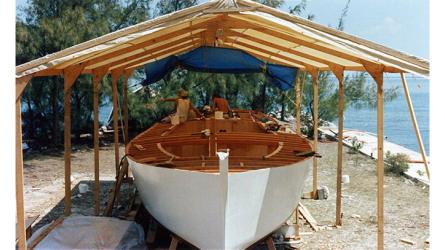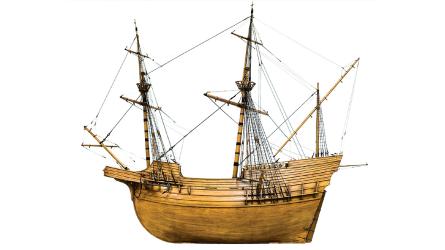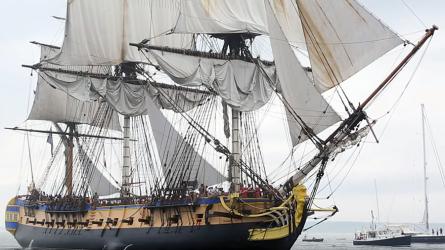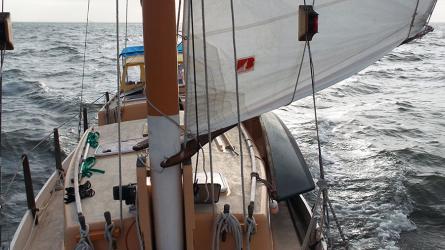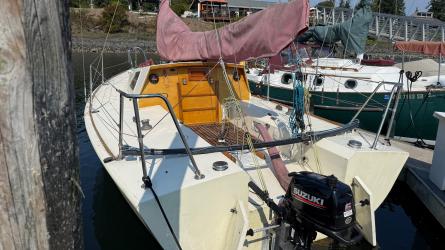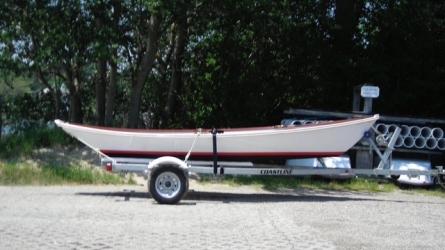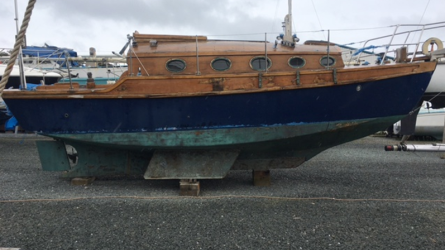May / June 2022
MAD RAY OF RYE
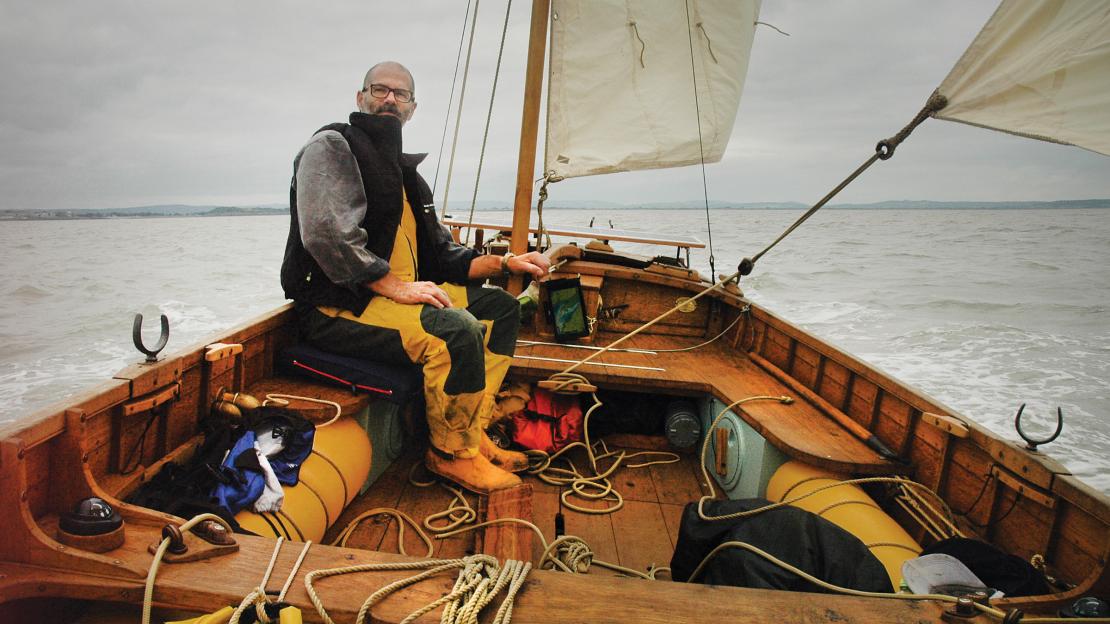
Peter Rolt
Boatbuilder John Raymond-Barker took his 18’ lug-rigged Hastings punt, MAD RAY OF RYE, on a maiden voyage that involved long passages on Bristol Channel. He selected the punt for its reputation as stout and seaworthy and built it following traditional methods. His modern equipment includes a tablet for navigation, running lights, an electric bilge pump with manual backup, and a solar panel. The buoyancy bags visible in the photo have since been replaced by built-in storage boxes that double as flotation.
In 2020, when John Raymond-Barker sold his 38' EDITH GRAY, which he designed in the Bristol Channel pilot cutter style and built for himself in 2011, he thought that would mean the end of his adventure-sailing days. He was convinced that he had swallowed the anchor. He had voyaged in EDITH GRAY extensively out of Bristol, England, with friends and family—Scotland, France, and the Isles of Scilly were among the destinations. He had sailed the Fastnet Race. He ran charters from the Welsh shore of the Bristol Channel under his own Wild Sailing brand. But with children in school and his elderly father nearby needing looking after, he realized it was time to shift his focus to his family. The fact was, he was spending more time maintaining EDITH GRAY than sailing her.
John’s father died that autumn. His only brother, James, also tragically died that year, at Christmas. James’s purchase of an old 16' Wayfarer dinghy, with a view toward setting her up for cruising, had inspired John to start thinking about building an open wooden boat, bigger than a dinghy but still trailerable—one that would get him back into the kind of sailing he loved best. “Wild sailing doesn’t just mean hard sailing,” he told me. “You only have to be a mile offshore and you can be in complete wilderness. To find wilderness on land, you’d have to travel hundreds of miles, but the sea is on our doorstep. What attracts me is the self-reliance required by the sea—the danger and the excitement as well as the beauty of open water.”
John was raised near Rye, a town far to the east on the English Channel, close to the Strait of Dover. His thoughts about the type of boat he wanted to build turned to the open fishing boats of that region—in particular the two-masted, lug-rigged Hastings punts (see sidebar, page 82). These boats were clinker-built (also known as lapstrake, with overlapping planks riveted together), and they had to be robust enough to launch and recover from a shingle beach in the surf of the exposed shoreline. For buoyancy aft when landing in breaking waves, builders in the area gave their boats, including the small punts, a characteristic “lute stern,” with the topmost planks extending aft to a secondary upper transom.
To read the rest of this article:
Click the button below to log into your Digital Issue Access account.
No digital access? Subscribe or upgrade to a WoodenBoat Digital Subscription and finish reading this article as well as every article we have published for the past 50-years.
ACCESS TO EXPERIENCE
2-for-1 Print & Digital Subscription Offer
For this holiday season, WoodenBoat is offering our best buy one, get one deal ever. Subscribe with a print & digital subscription for $42.95, and we’ll give you a FREE GIFT SUBSCRIPTION to share with someone special.
1 YEAR SUBSCRIPTION (6 ISSUES)
PLUS ACCESS TO MORE THAN 300 DIGITAL BACK ISSUES
PRINT+DIGITAL $42.95
Subscribe
To read articles from previous issues, you can purchase the issue at The WoodenBoat Store link below.
 Purchase this issue from
Purchase this issue from




